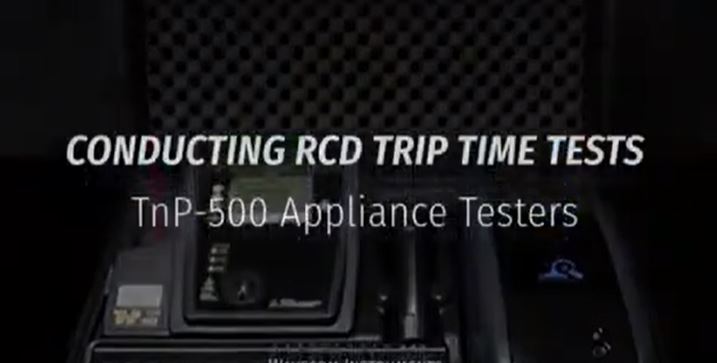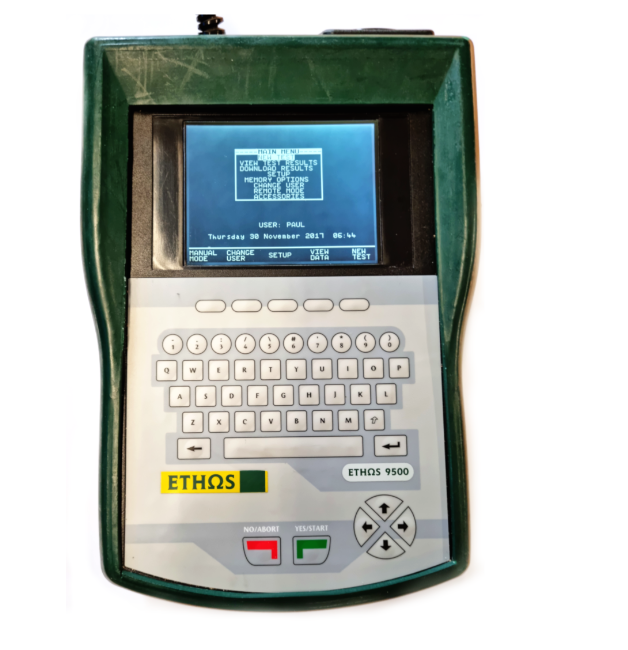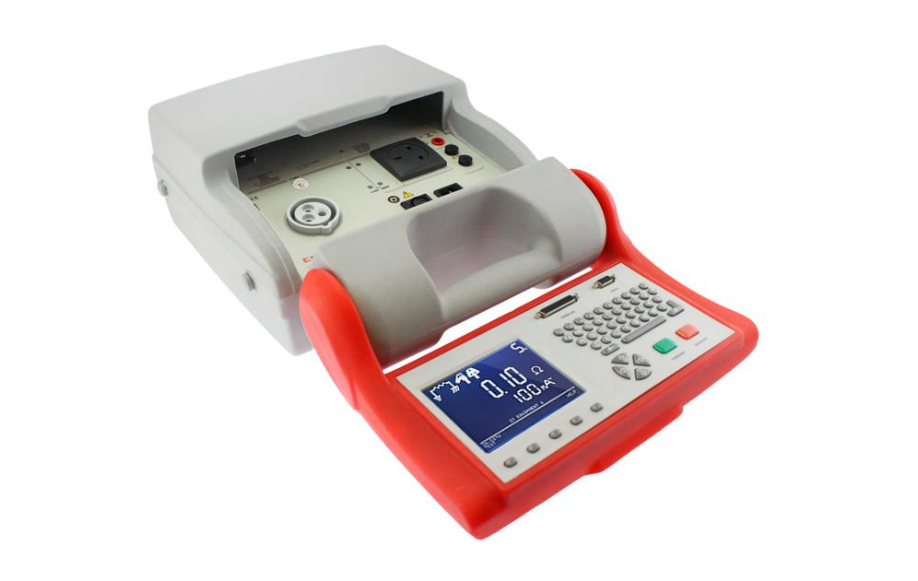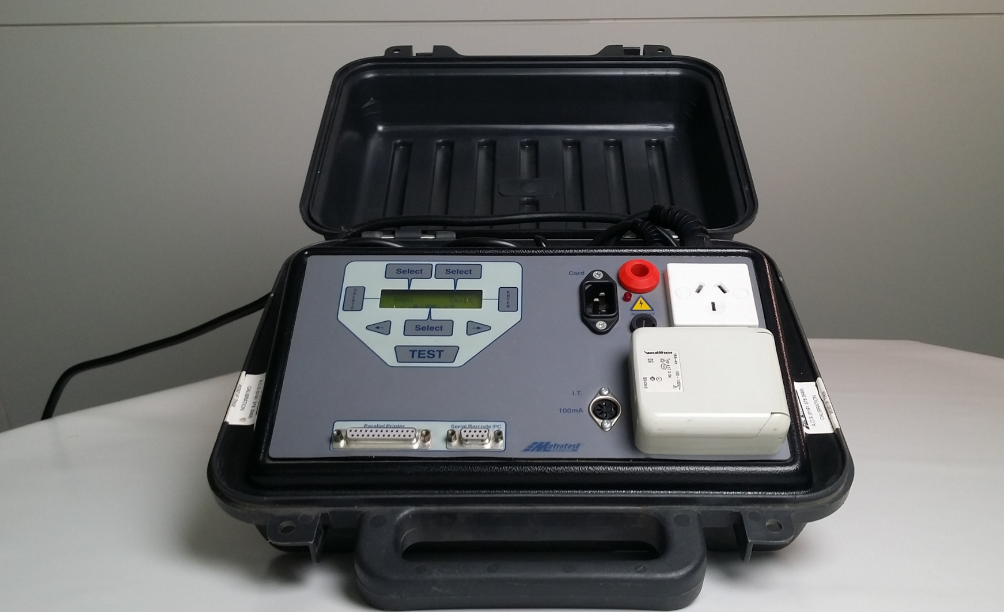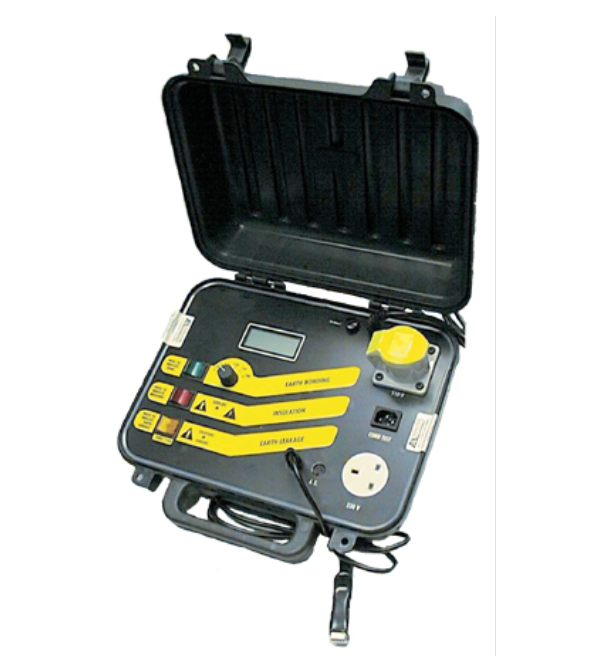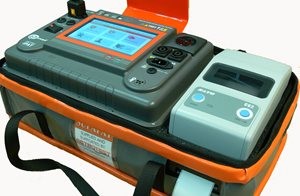Today we will look at another popular brand the TNT
We will review the TNP – 500 basic version
This tester sits in the $3 – 4000 bracket and likely includes a thermal transfer printer, software and barcode scanner.
Noted at first is it’s a small tester but then when its installed into a standard looking pelican type case it becomes quite large and weight is definitely getting up there.
Also noticed immediately is the bulky size of the qwerty keypad,
It has a small LCD display only and is not a touch screen nor a colored screen, that said the display is very clear.
This unit will not run on batteries and does require an additional isolating transformer when testing portable RCD’s
The unit has a smallish memory of 5000 items but this memory can be upgraded at an additional cost.
Wavecom
Wavecom have been very active in the Australian market and the TNT range has been around for many years, they produce a large range of Pat’s but all have many similar design characteristics.
There units are popular, how good they are or are they value for money let’s see what our conclusion is.
The tester is basically controlled by three function keys on the left side of the small LCD display and a enter/return key on the right side of the display.
Further controls ie data entry can be done by the qwerty keyboard and or the bar code scanner.
Due to only the four controlling keys adjusting settings etc is ….. let’s just say it could be easier!
Now let’s see how it performs testing wise.
Earth Bond test
The manufacturer refers to the earth test as an earth bond test but we sadly consider it( like a lot of its competitors ) to only do an earth continuity test. ie this tester can only test the protective earth at 200 milliamps ( 0.2 amp ) 10 amps or 25 amps is what we consider a true earth bond test!
Finding testers doing only the 200 milliamp test is always a disappointment and on this occasion we have noticed that all the Wavecom testers appear not to be able to do a protective earth test above the 200 milliamps.
We need to stress here that this low current test is acceptable to enable compliance with the current version of ASNZS 3760.
Ideally a Pat we believe should be able to do in addition to the 200 milliamp test at least a 10 amp earth bond test. Remember the protective earth is really the life line for the user of an earthed appliance if something goes wrong and the case becomes live!
We believe proving the integrity of the protective earth not just its continuity is essential for ensuring user safety.
500 volt Insulation Resistance test.
This function is there on the Pat as well as the ability to test at 250 volts, when testing appliances at either voltage the tester appears to work well.
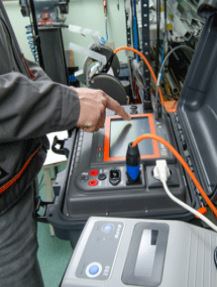
Leakage testing
The Pat works well and can test all single phase ( not 3 phase ) appliances providing the current draw is under 10 amps.
This limit may appear to the novice user/ purchaser to be insignificant but we however beg to differ, many appliances and tools have a momentary high in rush current way above 10 amps( think compressor/ brick saw/ drill press to name a few ) this limit is seriously going to cause many many users a big headache and we suspect many blown fuses!
A word of warning to current users don’t just add a bigger fuse….Pat’s are full of relays which all have a particular current rating, meaning if you put more current through the relays as a minimum contacts inside the relays will likely weld together, not to mention other potentially more serious and expensive repairs that may then be required.
Note The TnP – 500 is also available in a 20 amp version so a wise person looking at purchasing a Pat (if choosing a TNT Pat) would be advised to spend more and get the 20 amp version.
RCD Test
The Pat can do tests on both fixed and portable RCD’s, however if testing portable RCD’s the user will have to purchase an isolating transformer as without using this building RCD’s if fitted will likely trip first making the testing of the portable RCD’s very difficult or impossible.
On a plus note there appears to be more test current test options on this Pat than most others this could be advantageous to a few users though we suspect not many as most RCD’s are 30 milliamp devices or failing that 10 milliamp RCD’s, hence as other RCD’s arnt normally encountered and if they are, they are probably outside of the scope of testing required by ASNZS3760 this function whilst a little unique isn’t why you’d buy one of these Pat’s.
Maybe partly due to the uncommon need for the use of the isolating transformer when testing portable RCD’s and the set up required RCD testing with this Pat is unnecessarily time consuming and complicated and I’m sure for many it will be confusing.
Something that is becoming common on many Pat’s is the Ramp current test this can be worth while and we are pleased to see that this Pat does have this function.
For those who may think we may be wrong about the RCD tests on this Pat check out the video showing RCD’s being tested by this Pat and I think you may change your mind.
Other functions
The printer is a thermal transfer type, nothing unusual here and the functionality of the tag print system is adequate yet basic,
A small number of different print logos can be stored in the printer and selected via the Pat.
All tags are the same size so this is really just the standard type of print system, not anywhere near as advanced as some others and sadly we think with Wavecoms long history of building Pat’s this is a disappointing effort.
Scanner works as expected and the onboarding memory whilst small appears to work well.
Summing it up
- There is plenty of room for improvement in many areas, the RCD area needs a big look at ( seems to sometimes overheat when testing RCD’s ) plus just the complexity of tests are performed and the need for the transformer.
- Adding a minimum of a 10 amp earth bond function would make it a safety testing Pat
- deleting this model from the range or increasing its load testing to a minimum of 15 amps would help many users to have less headaches.
So now the big three questions
- Does it enable compliance with ASNZS3760? yes
- Is it a safety tester or a compliance only Pat tester? Sadly we have to put it in the compliance only box !
- Is it value for money ? We’ll leave you to decide that but we score it at a disappointing 3- out of 5.
Well, happy testing from the Pat review team

